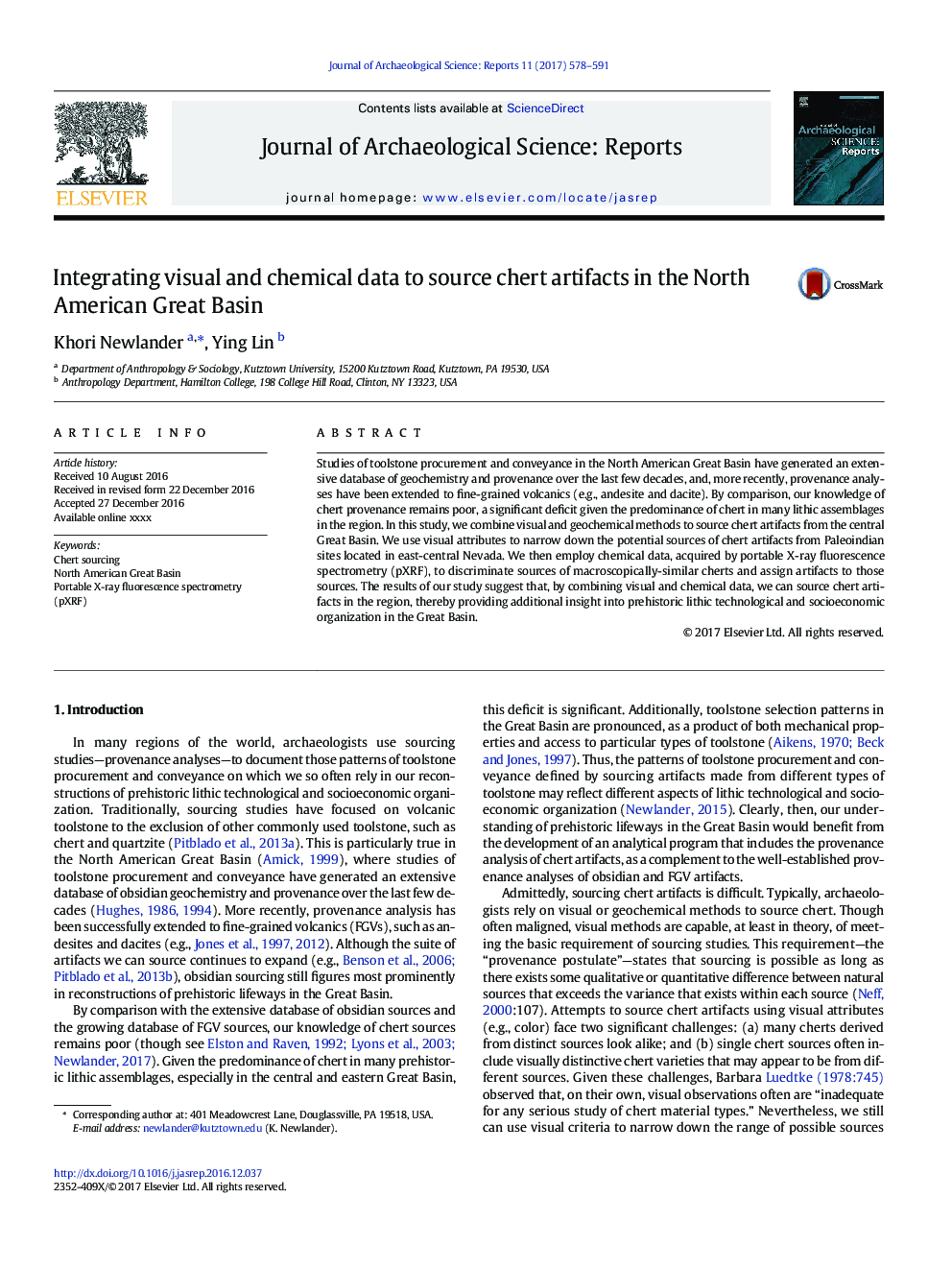| Article ID | Journal | Published Year | Pages | File Type |
|---|---|---|---|---|
| 5112588 | Journal of Archaeological Science: Reports | 2017 | 14 Pages |
Abstract
Studies of toolstone procurement and conveyance in the North American Great Basin have generated an extensive database of geochemistry and provenance over the last few decades, and, more recently, provenance analyses have been extended to fine-grained volcanics (e.g., andesite and dacite). By comparison, our knowledge of chert provenance remains poor, a significant deficit given the predominance of chert in many lithic assemblages in the region. In this study, we combine visual and geochemical methods to source chert artifacts from the central Great Basin. We use visual attributes to narrow down the potential sources of chert artifacts from Paleoindian sites located in east-central Nevada. We then employ chemical data, acquired by portable X-ray fluorescence spectrometry (pXRF), to discriminate sources of macroscopically-similar cherts and assign artifacts to those sources. The results of our study suggest that, by combining visual and chemical data, we can source chert artifacts in the region, thereby providing additional insight into prehistoric lithic technological and socioeconomic organization in the Great Basin.
Related Topics
Social Sciences and Humanities
Arts and Humanities
History
Authors
Khori Newlander, Ying Lin,
